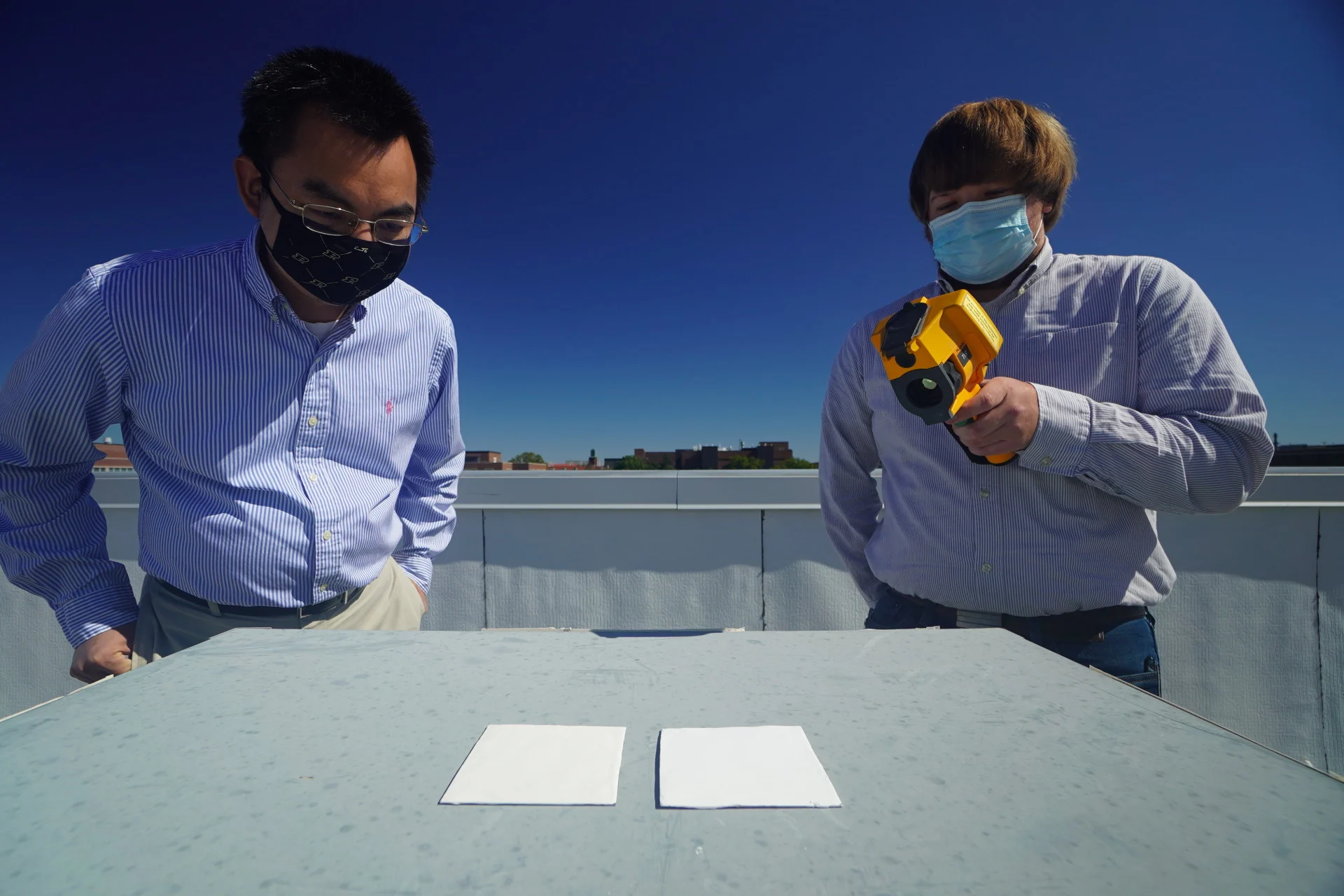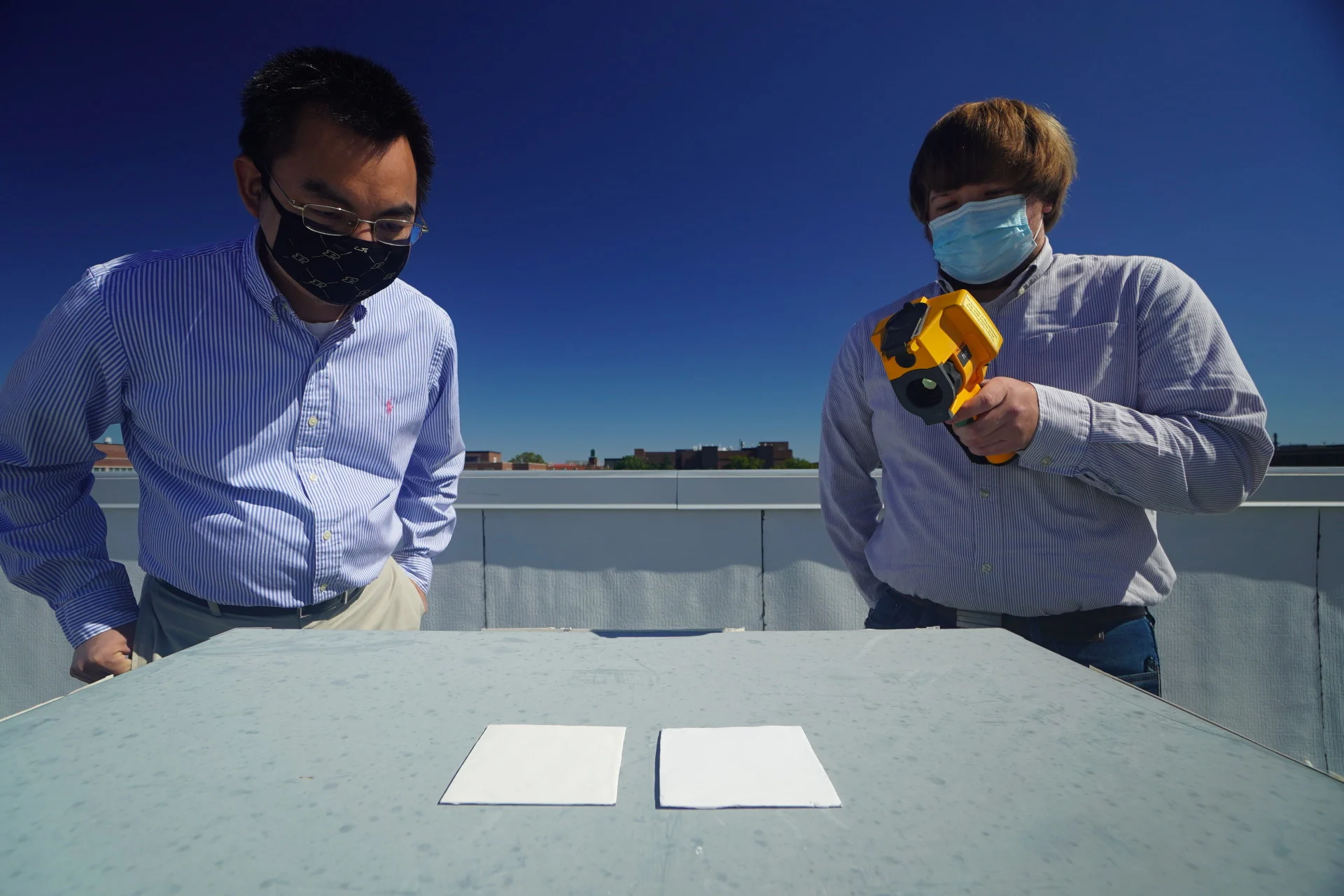
White 'cooling paint' could slash carbon emissions from buildings
Purdue University researchers developed a white paint that can keep buildings up to 10°C cooler, which can reduce carbon emissions.
Buildings are a significant source of carbon emissions, particularly in the summer when enormous amounts of energy are required to keep the indoor space at a comfortable temperature. While industrial cooling systems are becoming more efficient and energy-conserving over time, researchers from Purdue University have created a simple solution that could drastically slash carbon emissions from buildings.
The researchers published their study in Cell Reports Physical Science, which details their eco-friendly invention: white paint that can keep buildings cool. This paint contains calcium carbonate, an abundant compound found in seashells and rocks, which creates a cooling effect because it absorbs almost no UV radiation due to its atomic structure.
Approximately 95.5 per cent of sunlight is reflected by the paint, which outperformed commercial white paint that only reflected 87.2 per cent of the sunlight. The effect of the cooling paint was significant — buildings were up to 10°C cooler than their ambient surroundings during the night and at least 1.7°C below the ambient temperature when the Sun was at its peak.
“Your air conditioning kicks on mainly due to sunlight heating up the roof and walls and making the inside of your house feel warmer. This paint is basically creating free air conditioning by reflecting that sunlight and offsetting those heat gains from inside your house,” said Joseph Peoples, a Purdue Ph.D. student in mechanical engineering and a co-author of the study, in the university’s press release.

Purdue researchers Xiulin Ruan (left) and Joseph Peoples using an infrared camera to compare the cooling performance of white paint samples on a rooftop. Credit: Purdue University/Jared Pike
In addition to preventing the need for air conditioning that is typically fueled by carbon-emitting fossil fuels, the researchers say that their cooling paint sends the sunlight’s heat into deep space. The cooling paint’s calcium carbonate scatters the sunlight’s wavelengths so that it can exit through part of the atmosphere, which is known as an atmospheric window, so it does not warm up the Earth’s surface. The cooling paint’s heat-reflective ability is a key feature that commercial white paints lack.
“We’re not moving heat from the [Earth’s] surface to the atmosphere. We’re just dumping it all out into the universe, which is an infinite heat sink,” said Xiangyu Li, a postdoctoral researcher at the Massachusetts Institute of Technology and contributor to this study.
The researchers say that there is potential for this paint to be successfully applied on several surfaces including roads, roofs, and cars, which could have a significant global cooling effect. A study published in Nature Geoscience found that creating lighter surfaces could help to lower extreme temperatures by up to 3°C in cities, such as New York City, during the summer months, which would improve public health and lower both electricity usage and carbon emissions.
Canadians spend 90 per cent of their time indoors and in 2018, residential, commercial and industrial buildings accounted for 17 per cent of the country’s carbon emissions. While Canada only sees extreme heat during the summer season, solutions like Purdue’s cooling paint will be needed to mitigate the dangerously hot conditions that many communities and major cities experience for several months during the year.







